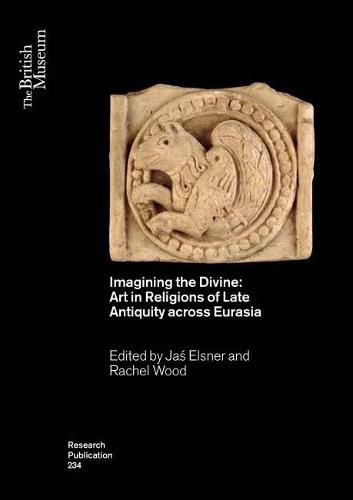Readings Newsletter
Become a Readings Member to make your shopping experience even easier.
Sign in or sign up for free!
You’re not far away from qualifying for FREE standard shipping within Australia
You’ve qualified for FREE standard shipping within Australia
The cart is loading…






This groundbreaking volume brings together scholars of the art and archaeology of late antiquity (c. 200 1000), across cultures and regions reaching from India to Iberia, to discuss how objects can inform our understanding of religions. During this period major transformations are visible in the production of religious art and in the relationships between people and objects in religious contexts across the ancient world. These shifts in behaviour and formalising of iconographies are visible in art associated with numerous religious traditions including, but not limited to, Buddhism, Christianity, Hinduism, Islam, Judaism, Zoroastrianism, religions of the Roman Empire, and paganism in northern Europe. Studies of these religions and their material culture, however, have been shaped by Eurocentric and post-Reformation Christian frameworks that prioritised Scripture and minimised the capacity of images and objects to hold religious content. Despite recent steps to incorporate objects, much academic discourse, especially in comparative religion, remains stubbornly textual. This volume therefore seeks to explore the ramifications of placing objects first and foremost in the comparative study of religions in late antiquity, and to consider the potential for interdisciplinary conversation to reinvigorate the field.
$9.00 standard shipping within Australia
FREE standard shipping within Australia for orders over $100.00
Express & International shipping calculated at checkout
This groundbreaking volume brings together scholars of the art and archaeology of late antiquity (c. 200 1000), across cultures and regions reaching from India to Iberia, to discuss how objects can inform our understanding of religions. During this period major transformations are visible in the production of religious art and in the relationships between people and objects in religious contexts across the ancient world. These shifts in behaviour and formalising of iconographies are visible in art associated with numerous religious traditions including, but not limited to, Buddhism, Christianity, Hinduism, Islam, Judaism, Zoroastrianism, religions of the Roman Empire, and paganism in northern Europe. Studies of these religions and their material culture, however, have been shaped by Eurocentric and post-Reformation Christian frameworks that prioritised Scripture and minimised the capacity of images and objects to hold religious content. Despite recent steps to incorporate objects, much academic discourse, especially in comparative religion, remains stubbornly textual. This volume therefore seeks to explore the ramifications of placing objects first and foremost in the comparative study of religions in late antiquity, and to consider the potential for interdisciplinary conversation to reinvigorate the field.